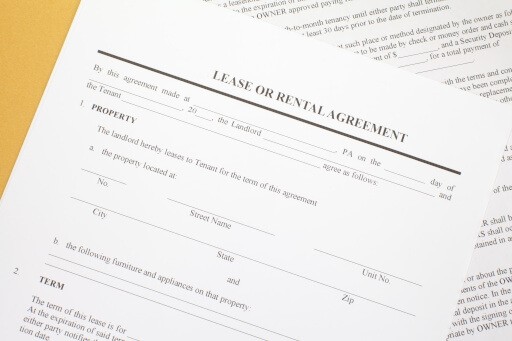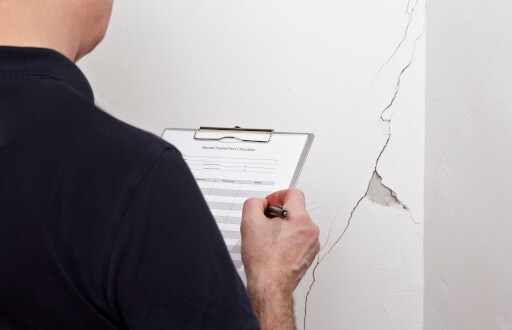
One of the aspects of being a landlord is determining the right time to send a lease termination letter. Lease termination letters are important because they inform the tenant about the end of a lease agreement. Lease termination letters help prevent misunderstandings, help you keep good records, ensure you follow the lease agreement, and adhere to state laws/regulations.
To help you write a lease termination letter and become an expert on them, this guide and lease termination template will cover:
- What Is a Lease Termination Letter?
- When to Send a Lease Termination Letter
- Why Would I Need to Send a Lease Termination Letter?
- What to Include in Your Lease Termination Letter
- Free Template of Lease Termination Letter
- What to Avoid When Writing a Lease Termination Letter
- Helpful Tips for Writing Your Lease Termination Letter
- Frequently Asked Questions
- Avoid Terminating Tenants with Apartments.com
What Is a Lease Termination Letter?
A lease termination letter is a written notice given by the property owner/manager to inform the tenant that their lease agreement is being ended and will not be extended beyond a specified date. Often, it is sent when a lease is ended early. It is also called a 30-day notice to vacate, a termination of lease agreement letter, or a termination of lease letter. In some cases, a tenant can send a lease termination letter and/or a notice to vacate letter to a landlord.
This letter outlines the termination date of the lease and any other relevant conditions pertaining to the termination such as a reason for termination. It is crucial to document all details in writing to prevent any potential misunderstandings.
When to Send a Lease Termination Letter
Usually, a lease termination letter is given to a tenant at least 30 days prior to the end of the lease date stated in the letter. However, you may be required to provide a 60-day notice or even a 90-day notice of termination, depending on your lease agreement as well as your local and state laws. So be sure to read up on those documents and laws before sending a lease termination letter to your tenant. Depending on the kind of tenancy, different amounts of notice may be required. With month-to-month tenancies, a 30-day notice is most common.
Why Would I Need to Send a Lease Termination Letter?
Generally, there are six categories of reasons why a landlord may need to send a lease termination letter. Most reasons can fit into these categories:
- The landlord is selling the rental property, and the current tenants must vacate it
- The landlord decides to move themselves, or their family, into the rental unit
- The tenant chooses not to renew their lease/It’s the end of the lease term
- The tenant decides to break their lease early
- The military deploys the tenant
- The rental property becomes inhabitable
If the tenant breaks their lease early or otherwise violates it, you may send a lease termination letter as the first step of the eviction process. The early termination of a lease agreement by the landlord may be needed if the tenant:
- Continuously violate noise policies
- Continuously violate pet policies
- Significantly damage the rental property
- Conducts criminal activity in the rental property
- Fails to pay rent
- Fails to move out on agreed date
Though rare, circumstances where a tenant breaks their lease early or violates their lease do occur. What to do when a tenant breaks a lease or violates it can be broken down into several steps. A lease termination letter can be sent in conjunction with the eviction notice. To prevent any misunderstanding on the conditions surrounding a termination, landlords should include a lease termination clause in the original lease contract. The clause should outline the circumstances in which a landlord or a tenant may terminate a lease. It should also outline the protocol for landlords and tenants to follow for each occasion, like giving 30 days’ notice before vacating the property. Finally, the clause should also include what happens if a tenant breaks the lease early, such as any consequences or fees that a tenant may face.
A lease between you and your tenant can come to an end in a variety of ways. Each situation requires different procedures and documents. For instance:
- If the lease between you and your tenant is naturally coming to an end and the tenant chooses not to renew their lease, then it is standard procedure to send them an end-of-lease letter as a reminder. An end-of-lease letter differs from a lease termination letter in that the end-of-lease letter should be sent at the natural conclusion of a lease and serves as a notification and reminder about the lease ending. A lease termination letter is often sent when a lease is being terminated early.
- If your tenant chooses to break the lease, they will be required to send you a notice to vacate letter and/or a lease termination letter, and in return, you may send an end-of-lease letter as confirmation.
- If the tenant violates their lease and you have to evict them, you would send them an eviction notice rather than a lease termination letter.
What to Include in Your Lease Termination Letter
Your lease termination letter to your tenant should include:
- Your name
- The name(s) of tenant(s)
- The date you’re writing the letter
- The reason for termination
- The end of lease date
- Move-out process instructions
- Copy of the move-out checklist
- A request for the tenant’s new address
- A request for the date and time of the walk-through inspection
Begin the letter by writing your name and your contact information (including your mailing address) in the upper left-hand corner. This should be followed by today’s date and the name and mailing address of your tenant. Address the letter to your tenant and give them the reason for the termination of the lease in the first paragraph, as well as the start and end dates to the lease.
The second paragraph should mention the move-in walk-through that happened at the beginning of the tenancy. You should have given them a copy of this at the beginning of the lease, but to be sure, attach another copy for their records. Follow up by requesting to schedule a move-out walk-through (also known as a final inspection).
Request your tenant’s new mailing address for returning the security deposit (if there are no damages or rent left unpaid). Be aware that there may be laws/regulations regarding the security deposit. Finally, thank your tenant for renting from you, followed by your signature and printed full name.
Free Template of Lease Termination Letter
Here is a free lease termination letter template to help you get started. This template is just a starting point, so be sure to check your state laws and the terms of your lease before finalizing your lease termination letter.
[Property Address, Unit Number]
[City, State, Zip]
[Today’s Date]
Dear [Renter’s First Name],
This letter is to inform you that the lease for [Property Address] signed on [Lease Start Date] will terminate on [Lease End Date] and will not renew. Attached is a copy of the lease agreement for your reference. Per the lease agreement, this lease termination letter fulfills the [Number of Days]-day notice requirement.
This decision has been made due to [Reason for Termination: e.g., the end of the lease term, sale of the property, repeated violations of lease terms, etc.].
Please ensure that you have vacated the premises by [Move-Out Date], which is in accordance with the notice period stipulated in our lease agreement.
I have attached a copy of the move-in walk-through and would like to schedule a move-out walk-through at the end of the lease. Please email or call to schedule the final inspection.
Please also send your new mailing address for future reference and in the case of returning your security deposit.
Thank you for your time on the above matter and for being a great renter. If you need anything further, don’t hesitate to reach out.
Sincerely,
[Your Signature]
[Your Full Name]
[Your Phone Number or Email]
What Should I Avoid When Writing a Lease Termination Letter?
No matter the situation, it’s important to leave on good terms with your tenant. Follow these tips on what to avoid in your lease termination letter:
- Avoid an unprofessional tone when writing your lease termination letter. Your lease termination letter should be written in professional and polite language. It should not come across as being rude or dismissive.
- Don't make any promises about refunding a portion or the full security deposit in your lease termination letter. Even if you’re sure that there is no damage to the property, never make any verbal or written promises about the tenant’s security deposit until it’s definite.
- Avoid using vague language, especially regarding the lease end date. Write out the full date (month, day, year) so there are no questions.
- You should never make up or embellish the cause of termination. Be sure you clearly state the reason for lease termination in the letter.
Helpful Tips for Writing Your Lease Termination Letter
Now that we have gone over what to avoid writing in your lease termination letter, let’s go over a few final tips:
- You can personalize the letter however you like, such as including the reason for termination (if applicable) or specific move-out instructions (that should also be outlined in the lease).
- Keep your written notice simple and polite. As a formal letter, a professional and respectful tone should be kept throughout. This letter isn’t a place to settle any potential past issues that you may have had with your tenant. The only purpose this letter serves is to give notice to your tenant of their end-of-lease date and provide a record of your written notice.
- Keep a copy of the lease termination letter for your records. It’s a rental document that all landlords need to have, just in case.
- Don’t forget to include the date in your letter. The date proves that you have met the notice period according to your state laws and the lease agreement between you and your tenant.
- Be sure to request your tenant’s forwarding address so you have somewhere to send the security deposit back to them (if applicable).
- If you don’t hear from your tenant about the final walk-through, follow up with a call or email as a friendly reminder.
Frequently Asked Questions
Can a lease be terminated without notice?
Typically, the tenant needs a 30 or 60-day notice before lease termination. Check your state laws for specific information.
Can either party terminate the lease?
In most states, tenants have the right to terminate a lease under certain conditions, including active military duty, violation of habitability, or right-of-entry violations. Again, check your state laws for more detailed information.
What happens after notice of termination?
The tenant has a specific timeframe, determined by state law and your rental agreement, before they need to vacate the property. You should state the amount of time the tenant has to vacate the property in the lease termination letter.
Should you mail or give the notice in person?
You should always send the document via certified mail when corresponding information such as a lease termination letter. This way, the sender may receive a mailing receipt and an electronic verification when the recipient receives the document. If you need it, certified mail proves that you gave adequate notice for vacating a property.
Should a lawyer review your lease termination letter before sending it?
It is wise to hire a lawyer to review your lease termination letter. A knowledgeable real estate attorney can highlight and prevent any errors and suggest necessary changes.
What is the difference between a lease termination letter and an eviction notice?
A lease termination letter is not an eviction notice. An eviction notice is given when the tenant violates the lease agreement, while a lease termination letter simply states the lease is ending. The eviction notice must be filed with courts while a lease termination letter does not.
Avoid Terminating Tenants with Apartments.com
To prevent the need for early lease termination, it is crucial to screen your tenants prior to lease signing. With Apartments.com, tenant screening becomes effortless while obtaining necessary information and finding a qualified renter swiftly. Our unique approach stands out from competitors as we have partnered with TransUnion to provide comprehensive screening reports covering eviction, credit, and criminal history.
Additionally, Apartments.com offers support for co-signers, guarantors, and co-applicants, an exclusive feature not found elsewhere. If you require further information, you can conveniently request supporting documents directly from potential tenants through our platform.
This article was originally published on April 4, 2024.











